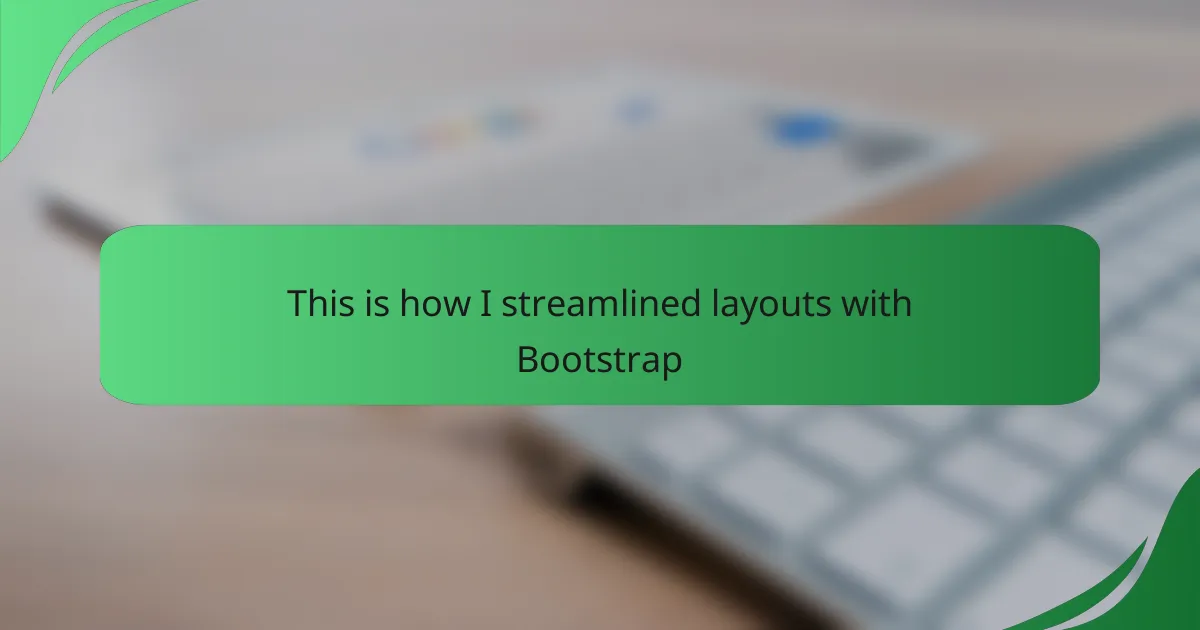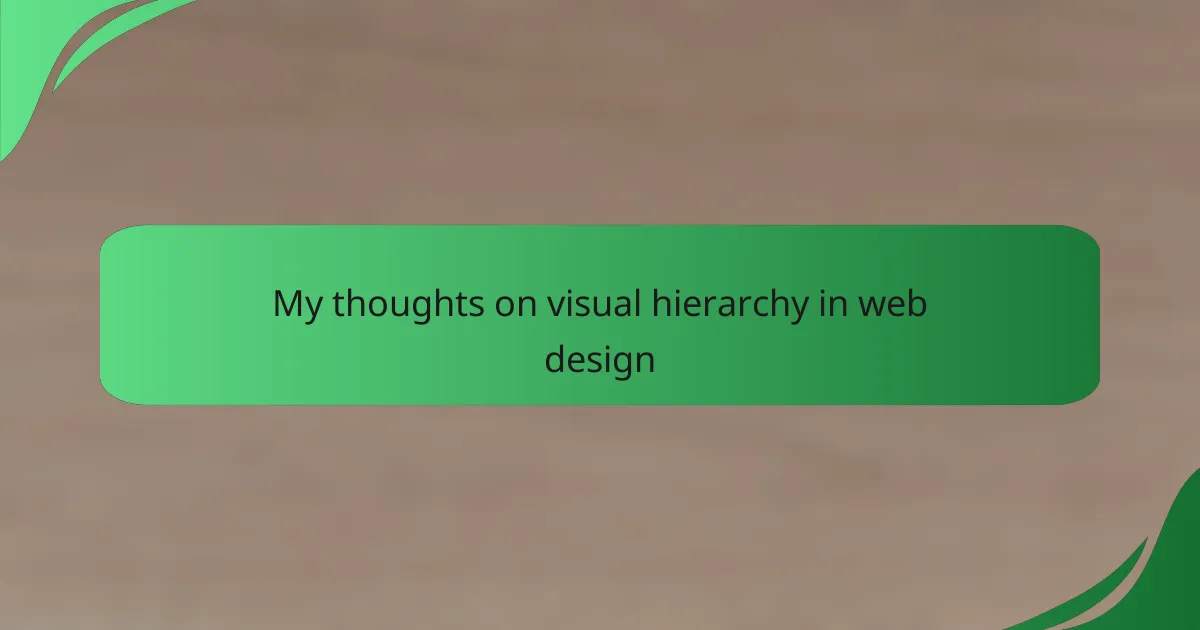Key takeaways
- Prioritize usability and user feedback for effective interface interaction design.
- Utilize effective design tools like Zeplin for seamless collaboration and clear communication between designers and developers.
- Adopt a systematic troubleshooting process to address design discrepancies by reviewing specs and collaborating with the team.
- Cultivate open communication and take breaks to foster creativity and minimize frustrations during problem-solving.
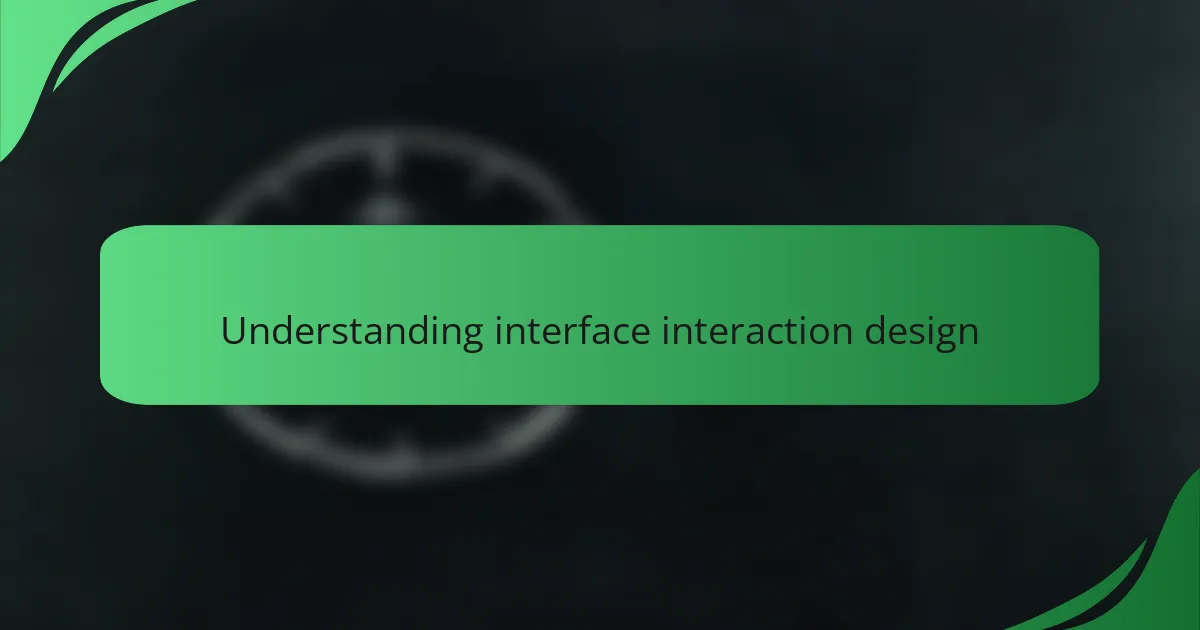
Understanding interface interaction design
Understanding interface interaction design is crucial for creating effective user experiences. I’ve often found myself navigating the delicate balance between aesthetics and functionality. It’s not just about how things look; it’s about how users interact with those elements. When I first started designing interfaces, I struggled to apply theoretical concepts into practical applications, but over time I’ve learned to blend these aspects seamlessly.
One of the key insights I gained through my experience is the importance of usability. I remember a project where I spent hours perfecting a visual design, only to realize later that users found it challenging to navigate. This revelation was a turning point for me. From that moment on, I focused on user feedback as the backbone of my design process. Here are some vital considerations in interface interaction design:
- User-Centric Approach: Always prioritize the user’s needs and expectations.
- Consistency: Maintain uniformity in design elements to reduce confusion.
- Affordance: Ensure interactive elements clearly indicate their function.
- Feedback: Provide users with immediate responses to their actions to enhance engagement.
- Accessibility: Design for all users, considering those with different abilities.
Reflecting on these aspects has not only improved my designs but also helped me foster a deeper connection with the users I serve.

Importance of effective design tools
Effective design tools are essential in any design workflow. I’ve often found that the right tools can be a game-changer, ensuring seamless collaboration and clearer communication among team members. For instance, when I started using Zeplin, I was amazed at how it streamlined our design handoff process, reducing misunderstandings and saving us valuable time.
The ability to translate design concepts into a format that’s easy for developers to interpret cannot be overstated. In one project, we faced significant delays because of misaligned expectations. But with Zeplin, those issues faded away, allowing for a smoother workflow. It’s moments like those that show just how powerful effective design tools can be.
Here’s a comparison of Zeplin with other popular design tools I’ve encountered:
| Feature | Zeplin | Figma | Sketch |
|---|---|---|---|
| Design Handoff | Excellent, clear specs | Integrated, but less detail | Good, but may require plugins |
| Collaboration | Real-time feedback | Real-time editing | Limited to comments |
| Usability | User-friendly interface | Sophisticated, but complex | Intuitive, but Mac only |
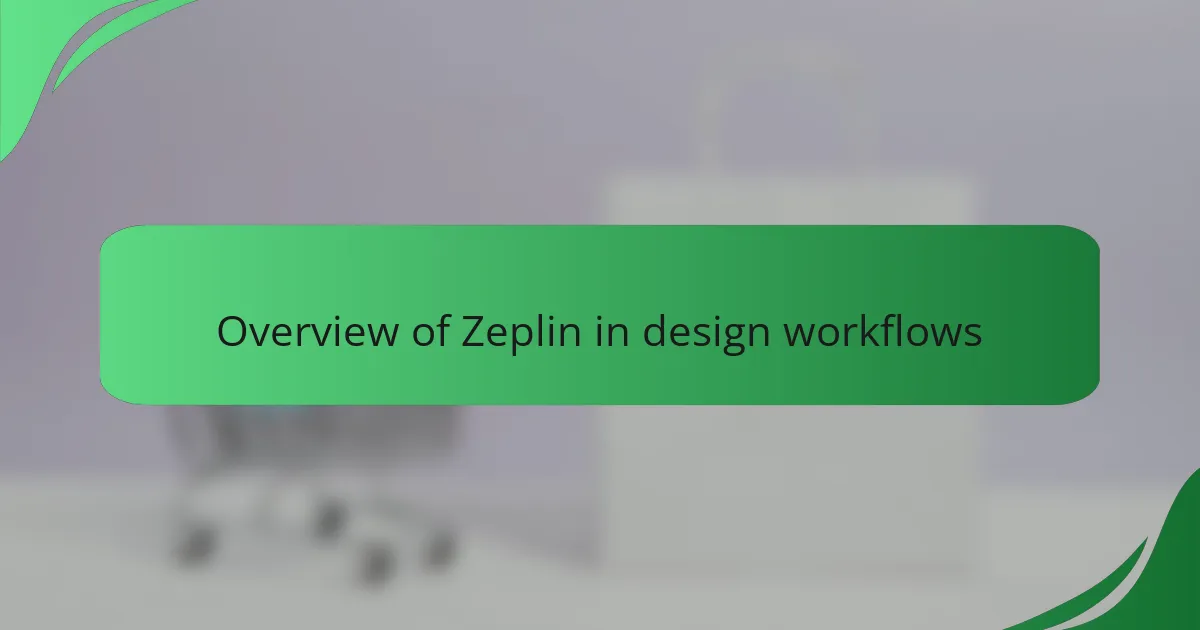
Overview of Zeplin in design workflows
Zeplin has become an essential tool in my design workflow. From the moment I started using it, I noticed how it streamlined the handoff process between design and development. I remember vividly the initial chaos of sharing design files and the confusion it often caused. With Zeplin, those frustrations faded away as it provided a clear, organized view of the designs, making collaboration feel seamless and effective.
What I appreciate most are the features that cater specifically to both designers and developers. The ability to generate style guides automatically and offer easy access to design specs transformed the way I communicate my vision. Here’s a quick overview of Zeplin’s key features that enhance design workflows:
- Automatic generation of style guides
- Code snippets for different platforms (iOS, Android, Web)
- Visual assets export in various file formats
- Collaborative comments for feedback and iterations
- Integration with other design tools like Sketch, Figma, and Adobe XD
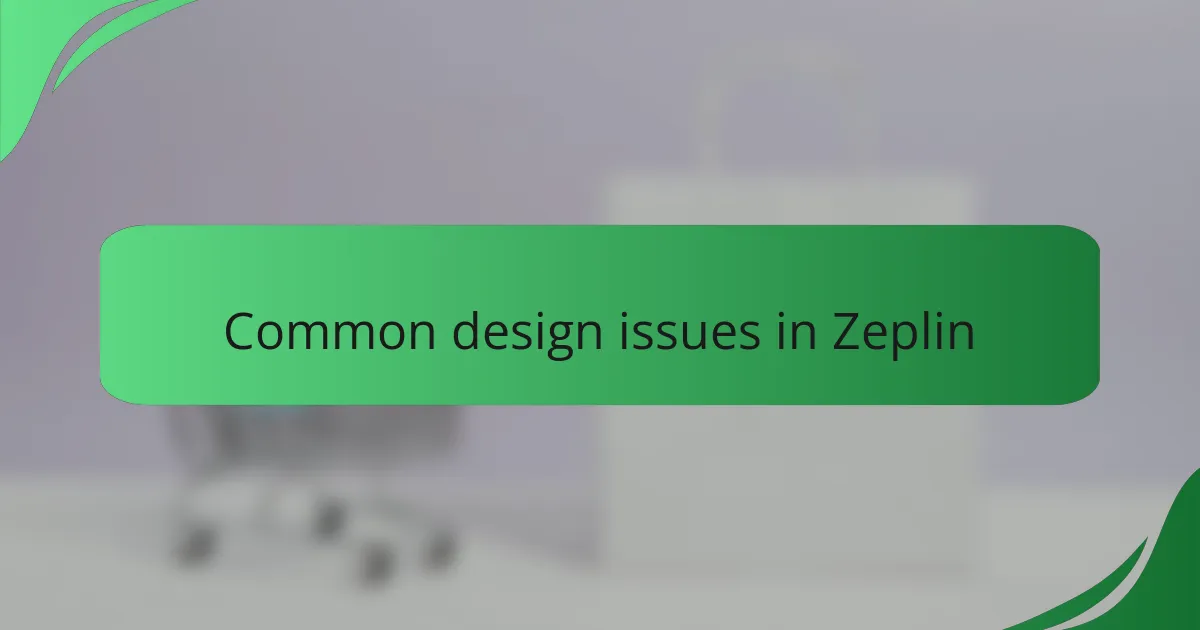
Common design issues in Zeplin
Common design issues in Zeplin can sometimes be frustrating, but they’re quite enlightening too. I recall a project where the color codes didn’t translate correctly from Sketch to Zeplin, leaving us with an off-brand palette. This issue arose because I hadn’t double-checked the settings before exporting. It taught me that attention to detail is crucial, particularly when bridging different tools in a workflow.
Another common hiccup I’ve encountered involves layers not appearing as intended. I remember working late on a user interface where vital elements got lost during the handoff. It was disheartening to realize that my meticulous layering in the design files didn’t carry over. To avoid this, I now ensure that all layers are appropriately named and organized, which not only saves time but also prevents miscommunication down the line.
In my experience, documentations can sometimes be a bit sparse when it comes to resolving these issues. Early on, I often found myself sifting through online forums for answers. That’s why I’ve learned to embrace community discussions and tutorials, which can be invaluable for troubleshooting. Have you ever found yourself searching for a quick fix instead of diving into the official guides? Engaging with others in the design community can not only resolve issues but also provide fresh perspectives on common challenges.
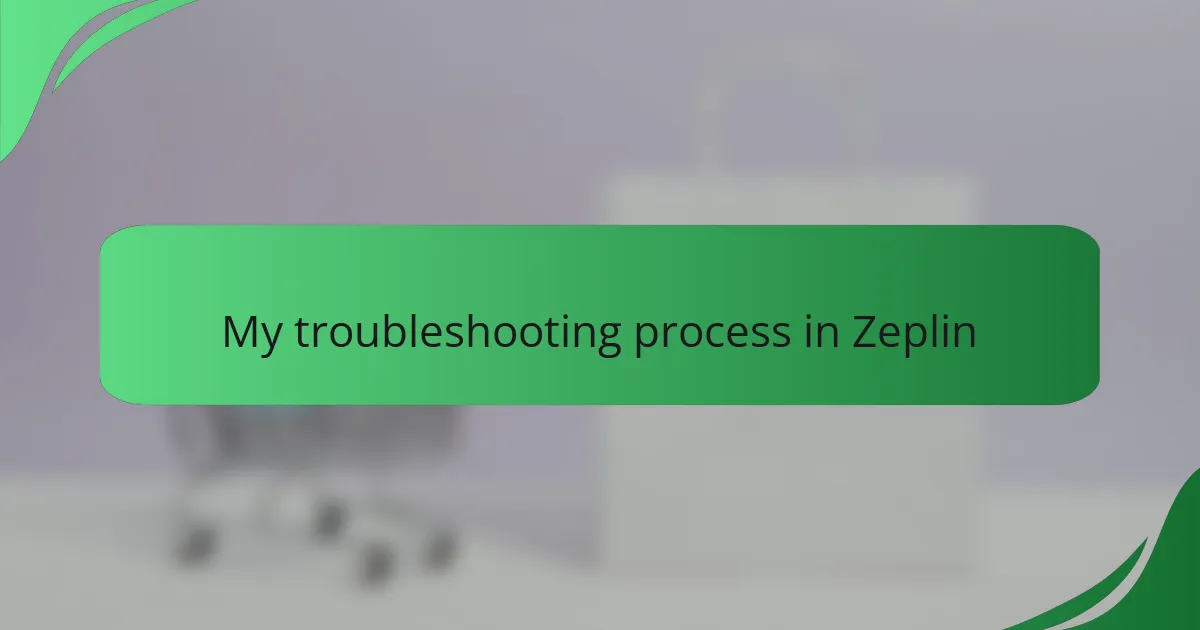
My troubleshooting process in Zeplin
When I first encountered design issues in Zeplin, it felt like a daunting puzzle. I remember staring at the screen, confused about the discrepancies between the designs and the implementation. My troubleshooting process involved a systematic approach: I would meticulously compare layers in Zeplin against our design guidelines, looking for missing properties or mismatches in measurements. This step helped me narrow down where the inconsistencies were cropping up.
Throughout this experience, I leaned on a few key strategies that proved to be quite effective:
- Review Design Specs Thoroughly: I would go through every detail in the design files first, making notes of the critical specs and assets.
- Use Annotations: Adding immediate comments on the designs within Zeplin helped facilitate clear communication with the developers.
- Collaborate with the Team: I found brainstorming sessions with developers invaluable; they provided insights that I hadn’t considered.
- Iterate Quickly: I learned the importance of quick adjustments and testing, as fixing small issues early on prevented larger problems later.
- Seek Feedback: Regularly asking for feedback from other designers helped me see the issues from different perspectives, enriching my understanding.
Each of these steps not only streamlined my process but also transformed what felt like a frustrating challenge into a collaborative effort.

Key lessons learned from troubleshooting
One key lesson I learned while troubleshooting design issues with Zeplin is the importance of clear communication among team members. There were moments when I felt frustrated because minor misunderstandings led to significant misalignments in our designs. By fostering an environment where everyone felt comfortable voicing their questions and concerns, we minimized confusion and accelerated the problem-solving process.
Another crucial takeaway was the value of patience and creativity in approaching design discrepancies. There were times I had to step back from the screen and reassess the design from a user’s perspective. This shift not only helped me identify the root of the issues but also ignited innovative solutions that we had initially overlooked.
- Cultivate open communication within the team to catch and resolve design issues early.
- Approach troubleshooting with a user-centered mindset to enhance problem-solving creativity.
- Take breaks when feelings of frustration arise; stepping back can provide new insights.
- Document the troubleshooting process to identify patterns and improve future workflows.



